Their thinking and hard work has paid some dividends. They have a book published by NCTE that will help people contextualize this framework. It is my pleasure to offer them some space to discuss the book. I hope that you will add it to your collection.
Teaching about Adolescence in YAL: Re-thinking the “Adolescent” in Adolescent Literacy by Sophia Tatiana Sarigianides, Robert Petrone & Mark A. Lewis
And yet, each of us continued to be troubled by YAL as we watched our students reading it. When we began working with future English teachers through courses on YAL, our uncertainties began to sharpen in focus. It was in those classes that many of our students, in their discussions of which YA texts they would teach, how they would teach them and why, would consistently rely upon ideas embedded within broader cultural norms about teenagers as justification for their pedagogical reasoning. Most of these assumptions about youth are rooted in developmentalism and have become so commonplace and normative that they were unremarkable to us at first as well. “Well, we all know that teenagers are (insert stereotype), so therefore, this would really be a book they could relate to.” “Teenagers are just too impressionable at that age; therefore, I wouldn’t allow them to read this book in my class.” As our experiences in these classes developed, so too did our understandings of our mixed feelings and apprehensions of YAL: it was the way in which youth were so easily and unproblematically known, universalized, and normalized as homogeneous. Folks in our classes would never speak about other groups of people in the ways we spoke about youth.
| From this space of discomfort, over the past few years, the three of us have worked to develop a line of scholarship that draws attention to and troubles how ideas of adolescence circulate within YAL. Foundational to this work is the idea that adolescence is a social construct, similar to gender and race, and not, like our broader cultural narratives would lead us to believe, normal or natural. For us, this basic, fundamental concept entirely shifted our orientation toward YAL. Specifically, the locus of our engagement with YAL became trying to understand how YA texts function ideologically when it comes to ideas of youth and adolescence. In other words, how does YAL develop and circulate ideas of adolescence, whether that be in the service of perpetuating these ideas, subverting them, or even both. This inquiry led us to develop the Youth Lens, which grew into a special-themed issue of English Journal, and now a a recently-published book for NCTE Principles in Practice series, Re-thinking the “Adolescent” in Adolescent Literacy. |
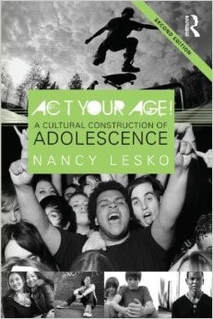
Most pertinent for YAL teachers, we add to our existing writing on YAL with a chapter in this book on critical readings of a group of YA fiction around key assumptions of adolescence. The chapter looks at how these novels work within and/or against dominant conceptions of adolescence, knowing that often texts do both, sometimes simultaneously. To get at these broader questions, we utilize four typical taken-for-granted assumptions of adolescence as discussed by Nancy Lesko (2012) in her foundational analysis of adolescence, Act Your Age: A cultural construction of adolescence:
1) youth can be signified by their specific age;
2) youth are intent on peer-orientations over relations with younger children or adults;
3) youth are governed by their hormones; and
4) youth experience a slow, coming of age into adulthood.
For each of these assumptions, we examine 2-3 well-known YA texts to reveal the ways they are perpetuating and/or subverting dominant conceptions of adolescence.
For instance, in the section where we discuss age, we offer readers an approach to examining how age functions in the novel. So often in our culture, age and our ideas attached to age go completely unnoticed as a construct, often taken as common sense. And yet such beliefs wield tremendous power to shape our consciousness about and behaviors in relation to others. Therefore, we encourage as one way to unearth assumptions of adolescence the concept of age. Based upon two overriding questions—How does age function in the novel? and How does age as used in the novel render adolescence, young adult characters, adults in the book, and the possibiltlies for these characters, including their interactions?—we propose the following questions as a way to start the analysis:
- Does the book reference the protagonist’s or other youths’ ages?
- Does the book refer to adults’ ages or just those of youth?
- Does the book represent the character in ways that contradict your expectations of age?
- How does the text use age in characterization and plot development?
- Does the book use age to attach social expectations of youth—and adults—to that
Similar to age, the chapter then moves through Lesko’s other three concepts, offering short analyses of other popular YA texts, such as Sherman Alexie’s (2007) The Absolutely True Diary of a Part-Time Indian and Walter Dean Myers’s (1999) Monster. Our hope with this chapter is to bring more attention to how these stories send messages about adolescence/ts to youth and adults. These four entry points offer teachers and students opportunities to challenge and critique stereotypes that may exist in these texts; something we believe is imperative for all students but especially for those who are already othered by dominant social discourses and institutions, like schools. It is our belief, too, that not only does this approach open up more critical vantage points to engage YAL but it also opens up more stimulation and perhaps even more fun. We hope the book does some introduction of critical views of adolescence for those of you for whom this is new material. We also hope the book extends thinking around adolescence and texts about and for youth for those of you doing the work already.
Alexie, S. (2007). The absolutely true diary of a part-time Indian. New York: Little Brown
Books.
Block, F.L. (1989). Weetzie bat. New York: HarperCollins.
Lesko, N. (2012). Act your age! A cultural construction of adolescence (2nd ed.). New York,
NY: Routledge.
Myers, W.D. (1999). Monster. New York: HarperCollins.
Sáenz, B.A. (2012) Aristotle and dante discover the secrets of the universe. New York: Simon &
Schuster.
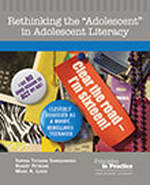
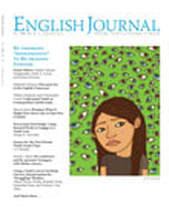
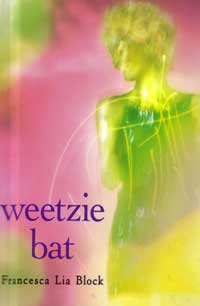
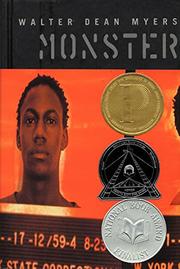

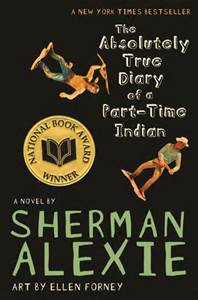

 RSS Feed
RSS Feed